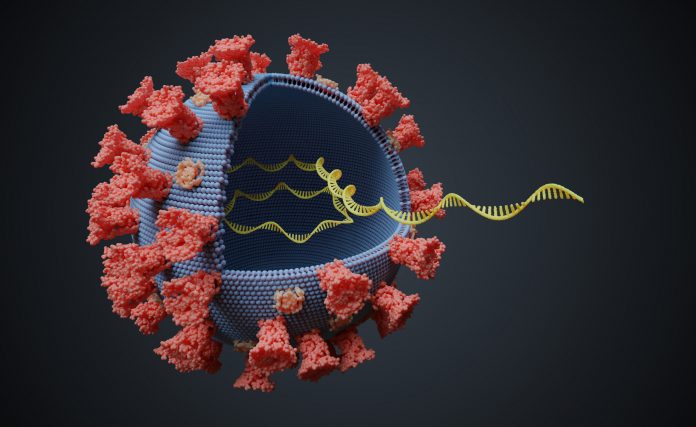
A new method of genome manipulation can rapidly engineer RNA viruses through precise cleavage and repair, with potential applications for antiviral therapeutics, vaccines, and screening of mutations.
The new recombinant technology enables specific deletions and insertions to the RNA of viruses. This is done through a combination of sequence-specific RNA cleavage by CRISPR ribonucleases and programmable RNA repair.
“Here, we establish an approach for RNA editing that enables fast and programmable deletions, insertions, and substitutions in any RNA by design,” the Montana State University researchers led by Artem Nemudryi, PhD, assert in the journal Science Advances.
In vivo genetic DNA editing has long been possible through the application of site-specific nucleases. This uses homing endonucleases to make site-specific breaks in DNA that are repaired through cellular DNA repair pathways.
Repurposing CRISPR (cr)RNA-guided endonucleases have facilitated increasingly precise DNA targeting. However, similar options to manipulate RNA without a DNA intermediary remain limited.
Cas13, a type VI crRNA-guided endoribonuclease, has been successfully programmed to target cellular transcripts, but has collateral nuclease activity in prokaryotes that prevent precision applications.
While type III CRISPR systems also target RNA, as with type VI, this occurs without collateral ribonuclease activity. This therefore enables precise targeting of cellular transcripts, with minimal off-target effects and cytotoxicity.
Nemudryi and colleagues explored the use of type III CRISPR-based RNA cleavage combined with splinted RNA ligation to make programmed deletions and insertions in target RNA sequences.
Specifically, they applied crRNA-guided nucleases to delete or substitute sequences in the genome of the Sindbis virus (SINV).
Coupling CRISPR-based RNA cleavage using a purified type III-A CRISPR complex of Streptococcus thermophilus (SthCsm complex) followed by splint ligation resulted in efficient RNA editing at a specified location.
The team was able to make programmed deletions in the RNA virus genome using SINV with an inserted a green fluorescent protein (GFP) reporter gene.
A guide RNA that cut out a portion of the gfp gene disrupted fluorescence in the encoded protein, such that cells transfected with the edited viral RNA produced significantly less GFP signal compared with the unedited control.
Sequenced viral genomes extracted from the cell supernatants confirmed that CRISPR-based RNA editing produced programmed deletions.
Finally, the researchers designed synthetic RNA and a complementary DNA splint to insert a new sequence at the SthCsm cleavage site that replaced the gene encoding the green fluorescent protein with a blue one.
The researchers note: “Unlike DNA editing, which often relies on protein-mediated recognition of a specific sequence motif, type III CRISPR systems only require complementary base pairing between the RNA guide and the RNA target, which eliminates additional sequence requirements and improves target site versatility.”
They maintain: “This work establishes a concept for manipulating RNA and demonstrates how this recombinant RNA technology enables rapid and facile engineering of RNA viruses.”













